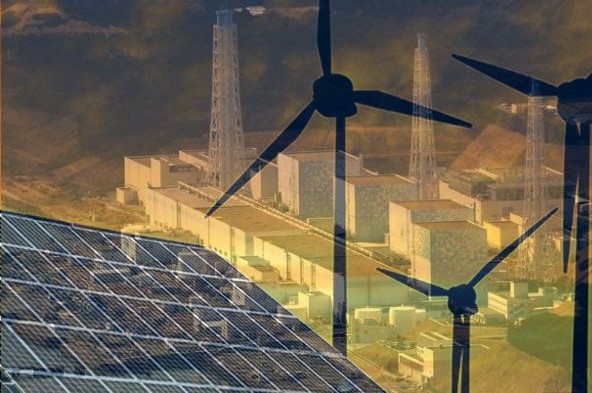Global renewable energy capacity additions in 2020 beat earlier estimates and all previous records despite the economic slowdown that resulted from the COVID-19 pandemic. According to data released by the International Renewable Energy Agency (IRENA), the world added more than 260 gigawatts (GW) of renewable energy capacity last year, exceeding expansion in 2019 by close to 50 percent.
IRENA’s annual Renewable Capacity Statistics 2021 shows that renewable energy’s share of all new generating capacity rose considerably for the second year in a row. More than 80 percent of all new electricity capacity added last year was renewable, with solar and wind accounting for 91 percent of new renewables.
Renewables’ rising share of the total is partly attributable to net decommissioning of fossil fuel power generation in Europe, North America, and for the first time across Eurasia (Armenia, Azerbaijan, Georgia, Russian Federation, and Turkey). Total fossil fuel additions fell to 60 GW in 2020 from 64 GW the previous year highlighting a continued downward trend of fossil fuel expansion.
“These numbers tell a remarkable story of resilience and hope. Despite the challenges and the uncertainty of 2020, renewable energy emerged as a source of undeniable optimism for a better, more equitable, resilient, clean, and just future,” said IRENA Director-General Francesco La Camera. “The great reset offered a moment of reflection and chance to align our trajectory with the path to inclusive prosperity, and there are signs we are grasping it.
“Despite the difficult period, as we predicted, 2020 marks the start of the decade of renewables,” continued Mr. La Camera. “Costs are falling, clean-tech markets are growing, and never before have the benefits of the energy transition been so clear. This trend is unstoppable, but as the review of our World Energy Transition Outlook highlights, there is a huge amount to be done. Our 1.5-degree outlook shows significant planned energy investments must be redirected to support the transition if we are to achieve 2050 goals. In this critical decade of action, the international community must look to this trend as a source of inspiration to go further,” he concluded.
The 10.3 percent rise in installed capacity represents expansion that beats long-term trends of more modest growth year on year. At the end of 2020, global renewable generation capacity amounted to 2 799 GW with hydropower still accounting for the largest share (1,211 GW) although solar and wind are catching up fast. The two variable sources of renewables dominated capacity expansion in 2020 with 127 GW and 111 GW of new installations for solar and wind respectively.
China and the United States were the two outstanding growth markets from 2020. China, already the world’s largest market for renewables added 136 GW last year with the bulk coming from 72 GW of wind and 49 GW of solar. The United States installed 29 GW of renewables last year, nearly 80 percent more than in 2019, including 15 GW of solar and around 14 GW of wind. Africa continued to expand steadily with an increase of 2.6 GW, slightly more than in 2019, while Oceania remained the fastest-growing region (+18.4 percent), although its share of global capacity is small and almost all expansion occurred in Australia.
Highlights by technology:
- Hydropower: Growth in hydro recovered in 2020, with the commissioning of several large projects delayed in 2019. China added 12 GW of capacity, followed by Turkey with 2.5 GW.
- Wind energy: Wind expansion almost doubled in 2020 compared to 2019 (111 GW compared to 58 GW last year). China added 72 GW of new capacity, followed by the United States (14 GW). Ten other countries increased wind capacity by more than 1 GW in 2020. The offshore wind increased to reach around 5% of total wind capacity in 2020.
- Solar energy: Total solar capacity has now reached about the same level as wind capacity thanks largely to expansion in Asia (78 GW) in 2020. Major capacity increases in China (49 GW) and Viet Nam (11 GW). Japan also added over 5 GW and India and the Republic of Korea both expanded solar capacity by more than 4 GW. The United States added 15 GW.
- Bioenergy: Net capacity expansion fell by half in 2020 (2.5 GW compared to 6.4 GW in 2019). Bioenergy capacity in China expanded by over 2 GW. Europe the only other region with significant expansion in 2020, adding 1.2 GW of bioenergy capacity, similar to 2019.
- Geothermal energy: Very little capacity added in 2020. Turkey increased capacity by 99 MW and small expansions occurred in New Zealand, the United States, and Italy.
- Off-grid electricity: Off-grid capacity grew by 365 MW in 2020 (2%) to reach 10.6 GW. Solar expanded by 250 MW to reach 4.3 GW and hydro remained almost unchanged at about 1.8 GW.

